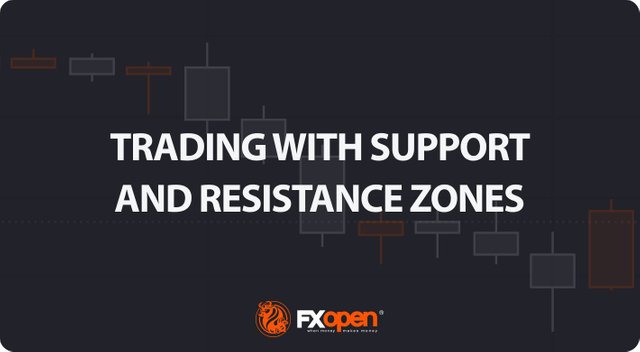
Support and resistance are fundamental concepts in the world of trading. They help traders gain an overall market background when analysing an asset’s price action, build expectations about price movements based on historical data, and make informed trading decisions. In this article, we discuss these concepts and provide some application strategies.
Understanding Support and Resistance
Support is a price level or area where a particular asset tends to find buying interest, experiencing a temporary halt or reversal in its downward price movement. It is often perceived by traders as a floor at which higher demand is very likely to emerge. Therefore, support levels can offer possible entry points for buying or exit points for a short position.
Resistance, on the other hand, is a price level or area where an asset faces selling pressure, causing it to pause or reverse its upward move. It is often considered by traders a price ceiling as it is where higher supply tends to emerge. Resistance levels help spot potential entry points for shorting an asset or exit points for a long trade.
A remarkable phenomenon is that once a support is breached, it tends to turn into resistance, and vice versa.
Supply and Demand Zones vs Support and Resistance Zones
Supply and demand zones differ from support and resistance lines in how they are identified and their fundamental concepts.
- Supply and demand zones are areas with a significant imbalance between buying and selling interest that may result in more significant market movements. In a demand zone, buyers overwhelm sellers and are willing to buy at a higher price, creating a floor; in a supply zone, sellers overpower buyers and are willing to sell at a lower price, establishing a ceiling. Supply and demand zones are more dynamic and may require a deeper understanding of order flow and liquidity.
- Support and resistance zones represent specific levels on the chart where historical price reversals have occurred. These levels can manifest as horizontal or sloping lines. They represent levels where significant buying (support) or selling (resistance) pressure has been evident. Support lines act as floors, preventing prices from declining further, while resistance lines serve as ceilings, curbing price increases. Support and resistance zones are more straightforward and rely on observable price levels.
Read full article visit https://bit.ly/3QWat0k